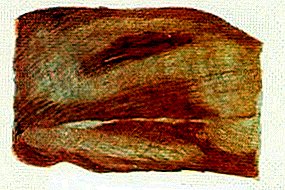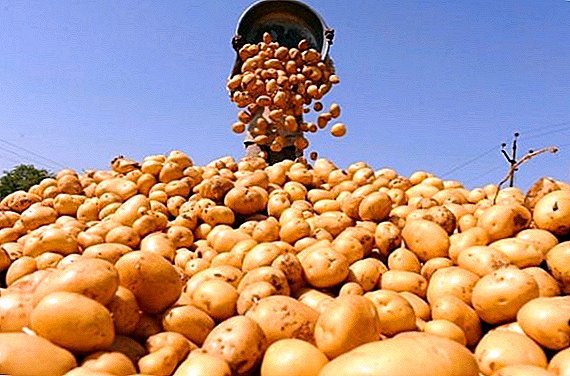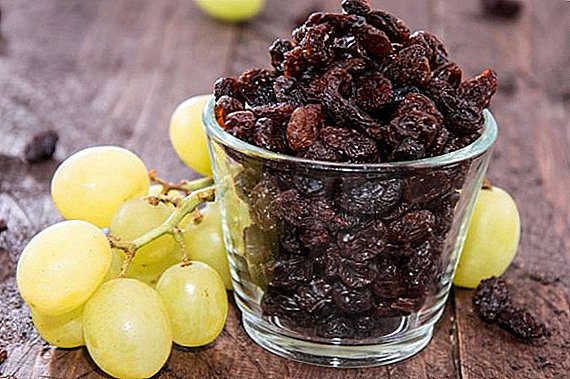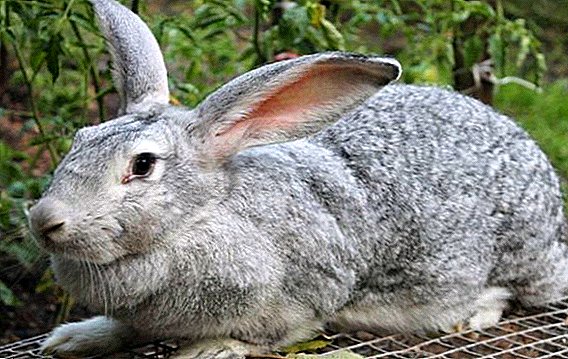
Young chickens are much more likely than adults to suffer from various unpleasant diseases.
It is during the growth period that the chicken organism is more vulnerable, therefore at this moment the breeders should be especially attentive.
It may happen that young hens become sick with white muscle disease.
In this article we will examine in detail what is the white muscle disease of chickens, why it occurs, how it can be diagnosed and how to treat it.
What is white muscle disease in chickens?
White muscle disease is an unpleasant and rather serious disease that always affects young chickens.
It is always accompanied by a violation of all metabolic processes in the body of a young bird, general toxicosis gradually begins to appear, and degenerative-inflammatory processes appear in the tissues. Most of all, this disease affects the heart muscle and other muscles of the body.
Degree of danger
 This disease affects young chickens of any breed.
This disease affects young chickens of any breed.
Almost always it occurs in the first weeks of the chickens life, characterized by a complete violation of the mineral, carbohydrate, protein and fat metabolism in the body of the bird.
All these changes are accompanied by dystrophy and necrobiotic structure of the skeletal muscles.
The death of young animals that become ill with white muscle disease can reach a level of 60% or more. Veterinarians note that most often this disease occurs in large poultry farms in the USA, Australia, England and Russia, therefore, domestic farmers need to be especially attentive.
The reasons
 White muscle disease most often occurs in young, which feeds monotonously.
White muscle disease most often occurs in young, which feeds monotonously.
As a rule, diseased chickens fed exclusively on hay of red clover and alfalfa before making a diagnosis.
Also, cases of white muscle disease were recorded on farms where the young were fed with hay collected from flooded meadows.
Another reason for the development of this disease in young birds is considered insufficient protein in feed, and also some useful mineral substances and vitamins, necessary for adequate growth of a bird.
Especially negatively on the health of chickens affects lack of vitamin E and trace element selenium.
The situation worsens if the young growth does not go for periodic walks, but is constantly kept in a stuffy henhouse. In particular, it concerns the maintenance of birds in the winter season.
Course and symptoms
 Signs of white muscle disease in chickens manifest themselves differently depending on the age and current feeding conditions, as well as the content of the poultry.
Signs of white muscle disease in chickens manifest themselves differently depending on the age and current feeding conditions, as well as the content of the poultry.
Most characteristic they are manifested in young. As a rule, increased mortality is almost immediately observed among the chickens.
Gradually, the level of diseased chickens increases. This happens especially after experiencing stress: relocation to another room or cage, vaccination, reducing the area of the chicken coop, etc.
At the very beginning of the course of the disease, the farmer might think that the chickens are dying from infection, but this is not the case. If you closely follow the chickens, you can see that they have completely lost their appetite.
Such chickens move little due to lack of energy, their plumage is constantly tousled, as the young do not have the strength to clean the feathers.
At the expiration of a certain period of time in chickens there is lameness. Separate parts of the body are gradually paralyzed, which is why seizures appear in birds.
A breeder can observe how a large number of "sliders" appear among the chickens: they are not able to walk normally, so I can only cuddle up to the floor and crawl, pushing with their paws.
In addition, the diseased young can be observed swelling in the neck and head. In these places, there is a slight reddening, which then becomes blue.
Diagnostics
 The diagnosis is based on the data of the obtained clinical picture.
The diagnosis is based on the data of the obtained clinical picture.
They can be obtained by examining the chickens, as well as studying their behavior.
However, the most informative way to determine white muscular disease is taking a test to determine the level of selenium.
In the laboratory for this purpose diaminonaphthalene is used.which well extracts selenium from any biological material obtained from sick chickens.
Also in the laboratories the method of radioactive isotopes and the neuron activation method are successfully used. All these methods allow you to accurately determine the amount of selenium in the body of a sick chicken.
You can also determine the disease of young animals using chemical analysis of food, biochemical analysis of blood and liver. A lack of selenium in the feed will immediately indicate the cause of the death of small chickens.
Treatment
 Unfortunately, chickens can be cured only at an early stage of the disease.
Unfortunately, chickens can be cured only at an early stage of the disease.
One of the most effective ways to combat white muscle disease is the use of drugs containing selenium and vitamin E.
The sodium salt of selenium or, in other words, sodium selenite is often used. In appearance, it looks like ordinary white salt.
In veterinary medicine 0.1% solution of this salt is used at the rate of approximately 0.1-0.2 ml per 1 kg of the total weight of the bird. It is mixed with food, which is given for several days, depending on the stage of the disease.
Another way to treat white muscle disease can be a feed with a high concentration of vitamin E. However, it can be given separately from the feed in 20 mg 3 times a day for one week.
You can also use special preparations containing vitamin E, for example, "Erevit" and "Aevit", which are injected with the help of an injection of 1 ml once for 24 hours.
The course of treatment is on average 10 days. It is beneficial for sick chickens to give sulfur-containing amino acids, for example, methionine and cysteine. They need to be given to a sick young by 0.5-1 g 3 times a day.
Disease prevention
 The best prevention of white muscle disease in chickens is proper nutrition.
The best prevention of white muscle disease in chickens is proper nutrition.
In compound feeds, there must be a proper concentration of all beneficial trace elements and vitamins in order for the birds to feel well.
As additional measures to prevent this disease in some poultry farms, young and adult birds are given tocopherol rich foods. These include grass, grass flour and germinated grain.
They have a positive effect on the general condition of the birds, which helps to prevent this disease.
In order for the birds not to suffer from a lack of vitamin E, it is possible to additionally add concentrated tocopherol to the feed, or in the form of granules. At the same time, the daily need of a bird for this vitamin directly depends on the overall composition of the diet.
 No matter how amazing it is, but some do not even know how to transplant an orchid after flowering.
No matter how amazing it is, but some do not even know how to transplant an orchid after flowering.Unfortunately, due to ignorance about proper feeding, many poultry farmers are facing liver obesity in chickens. Here //selo.guru/ptitsa/kury/bolezni/narushenie-pitaniya/ozhirenie-pecheni.html you can learn how to prevent this disease.
A greater amount of vitamin E or tocopherol should be given in case chickens eat food saturated with fish oil and vegetable oil. Fewer tocopherols are indicated for chickens that eat high carbohydrate foods.
On average, adult birds per day should receive 0.5 mg of tocopherol, and young animals - 0.3 mg per 1 kg of feed. If the birds are already sick with white muscle disease, then this dose is increased by 3 times.
Conclusion
White muscle disease is a dangerous disease that can cause the death of almost all young.
As a rule, the cause of this disease is improper nutrition, so the quality of the feed should be especially closely monitored. It is better to prevent the disease with quality supplements than to regret it because of the high mortality rate among chickens.












